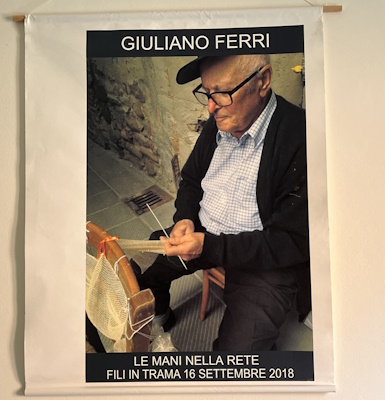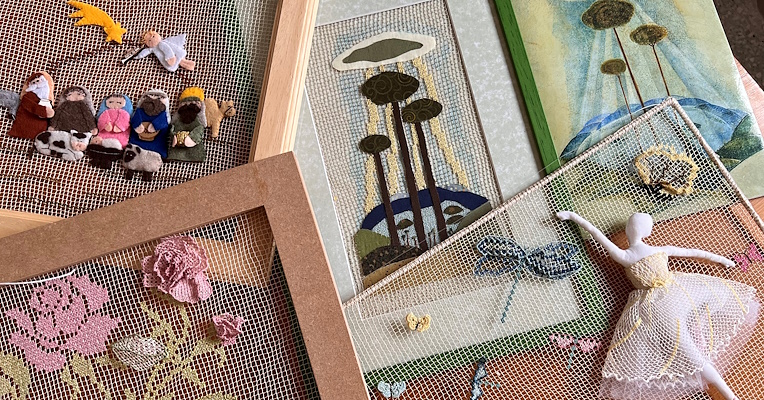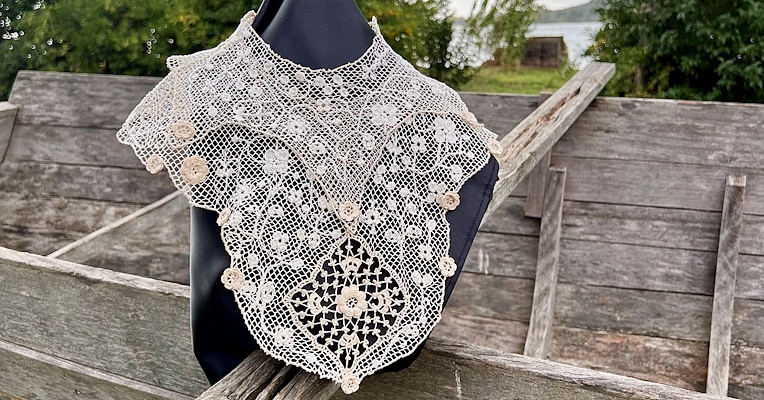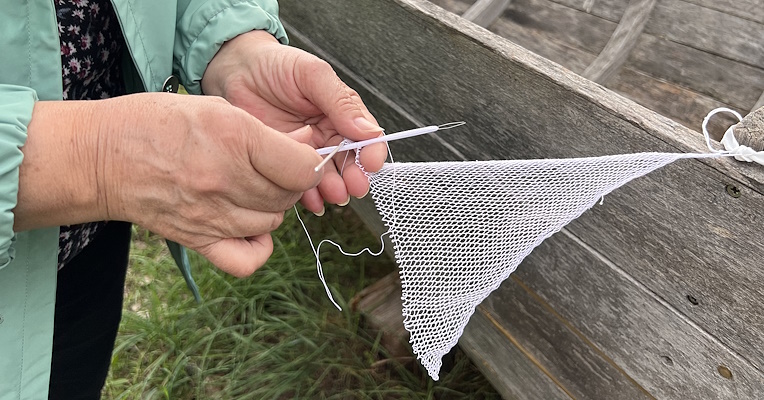The “Filet at Modano” of San Feliciano on Lake Trasimeno
San Feliciano is a charming hamlet in the municipality of Magione, whose history is closely intertwined with the waters of Lake Trasimeno on which it is reflected. Generations of fishermen have lived here for centuries, whose skills involved not only fishing, but also the creation of nets through a special technique of weaving a thread using a needle or spool called “modano”.
This knowledge is also widespread in other areas with a fishing or non-fishing vocation, and it is precisely in San Feliciano that it has given rise to a practice capable of combining two ancient working techniques pertaining to two apparently distant fields: the creation of a fishing net and embroidery.
The beginning of this craft dates back to the end of the 19th century with the arrival of Mrs. Andrianna Massaria, born in Veneto and wife of Anselmo Cesaroni, founder in 1913 of the San Feliciano seaplane school. A friend of Marchesa Guglielmi of Isola Maggiore, who had also introduced and taught island women the practice of Irish lace-making, in 1890 she began to teach a group of village women, the wives and daughters of fishermen and thus skilled in repairing the fishing nets used by local men, the art of net embroidery.
Over time, this technique was refined, and around the mid-1990s a real school was born in San Feliciano. It was kept alive thanks to the passion of a group of local women, who were joined by a fisherman, skilled both in making and embroidering modano nets, to the point of creating veritable works of art in filet. An example is the tablecloth that he later donated to the Church of Poggiodomo, his wife’s home town, made in two years of work.
























.jpg/d0d100cb-b3f9-c5b6-6aab-ad2d73b28bf2?width=1920)










